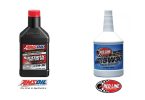What is the lifeblood of a car’s engine? Of course the engine oil, right? There is no alternative to avoid issues like the high cost of repairing and catastrophic engine failure. So, all you need to do is to make sure that your car has enough engine oil.
No doubt, taking proper care of engine oil is a must especially when you’re driving an aged vehicle. Sometimes you might become overwhelmed with how to check the engine oil in a car.
Here is how to do it like a pro!
How to Check Oil in a Car: Easy-to-Follow Steps
Part 1: Finding the Dipstick
- Follow the Manufacturer’s Recommendations
The first step starts with the recommendations of engine oil manufacturers. As per their recommendation, the ideal time for checking engine oil is before driving your car because this is the time when engine oils remain cold.
Remember the oil level seems lower after a drive that can lead you to overfill. Wait for at least ten minutes to check the oil after a drive.
- Park the vehicle on a flat surface
Make sure that the oil is not spilled to the pan’s one side for an accurate reading. Park your car on a flat surface to check the engine oil. Remember- if your engine faces downhill, it can provide you with an over-filled reading.
- Pop up the hood
Now, it’s time to pop the hood up to examine your engine. You’ll find a latch somewhere depending on your car’s model. In general, latches remain at the front center under the hood. After finding the latch, pull it to raise it and to check the oil.
Some car’s hood stays up automatically where others require a prep rod folded in the compartment of the engine. Lift it to the place to let it go over the hood.
- Find the dipstick
In most cases, dipsticks come with an orange, yellow, or red cap and round or rectangular in shape. You’ll find the dipstick close to the front inserted in a guide.
After done locating the dipstick, remove it for checking the oil. If you have an automatic transmission car, you’ll find two dipsticks to check the oil and transmission fluid.
- Gather old rags and paper towels
Gather an old rag and some paper towel before checking the consistency of the oil. Paper towels can be the best option as they can provide you a great white backdrop contrast of color to examine. Also, they will help you keep your hands clean.
Part 2: Checking the Oil

- Remove your car’s dipstick
In general, dipsticks are 1 foot long and check every tip for the desired reading. Pull out the dipstick holding the paper towel throughout the port you’ll be pulling. Do not try to force it because when you get off the cap, it will pull easily.
- Test the color and the quality of the engine oil
Now it’s time to check the quality and color of the engine oil. Remember- the oil color and consistency plays an important role in the overall engine efficiency. Don’t worry! You’ll be able to get a sense of the quality as soon as the dipstick is removed.
So, how can you determine the quality of your engine oil? Well, the oil in fine condition won’t be too dark. You’ll find it a slight yellow-greenish.
The more particulates the oil gets the more it will turn from golden to black. Your engine’s cylinders can be scraped slowly by particulates over time. This is the reason changing engine oil every 3000 miles is required.
- Dip the dipstick once more
Dipping the stick for the very first time was not enough to determine the amount of engine oil. Wipe the dipstick off and insert it once more to check the amount of oil
- Determine the oil level
You will find two small dots in most of the dipsticks where one refers to the maximum filling line into the pan and the other corresponds to the lowest. So check if the lower dot is near to the tip and the higher is an inch up.
If you find the line is halfway between these two dots, that’s cool! On the other hand, if the oil level is below the minimum dot, it means you should fill oil in your car’s engine.
Part 3: Pouring the Oil
- Check your user instruction
Engine oils come in wide varieties and not all of them can be used for all vehicles. Before you’re about to pour oil into your car engine, follow the user manual to check what oil grades are required by your car’s engine. Instead, you can consult with a local mechanic to know the right grade of oil required
- Find the oil fill cap
You’ll easily find the fill cap on top of the engine. Open it and fill oil in it using a funnel to avoid the risk of spilling it in the engine block that may cause a bad smell, burn off, and many worse problems.
- Add oil slowly
Well, now it’s time to fill oil in your engine. Do not do it in a hurry. Do not overfill the funnel and let the oil drain down.
- Check the oil twice
Check the oil level, again and again, to make sure that you’ve filled the right amount of oil in your vehicle’s engine. You’re all set!
Now check if you left anything like paper towels, rags, or bottles in your engine block. Then close the hood.
Summary
Hopefully, this article has helped you with the steps of checking the oil in a car. If you need further help, consult your local mechanic is recommended. If you have any queries, feel free to ask in the comment section below! Take proper care of your car and have a safe ride listening to quality music on your car speakers.










Leave a Comment